how to clean a furnace
How and Why to Vacuum the Furnace
Save money and increase your heating system's efficiency and comfort by following these simple steps to keep your furnace in tip-top condition.
Introduction
Together, these tasks will take you less than three hours to do, cost only a few dollars, and require a few basic hand tools. That's pretty cheap insurance for a worry-free winter of cozy, cost-effective warmth.
Winter's tough enough without your furnace dying or not putting out enough heat. And when it comes to furnaces, an ounce of prevention truly is worth a pound of cure.
So here are some basic maintenance tasks that you can do to ensure that your natural gas or propane-fueled furnace stays running in peak condition all winter.
Plus, check out these winter survival hacks to get you through the season.
Watch this video to see 6 tips for furnace troubleshooting:
ⓘ
Project step-by-step (13)
Step 1
Remove the Combustion Chamber Door
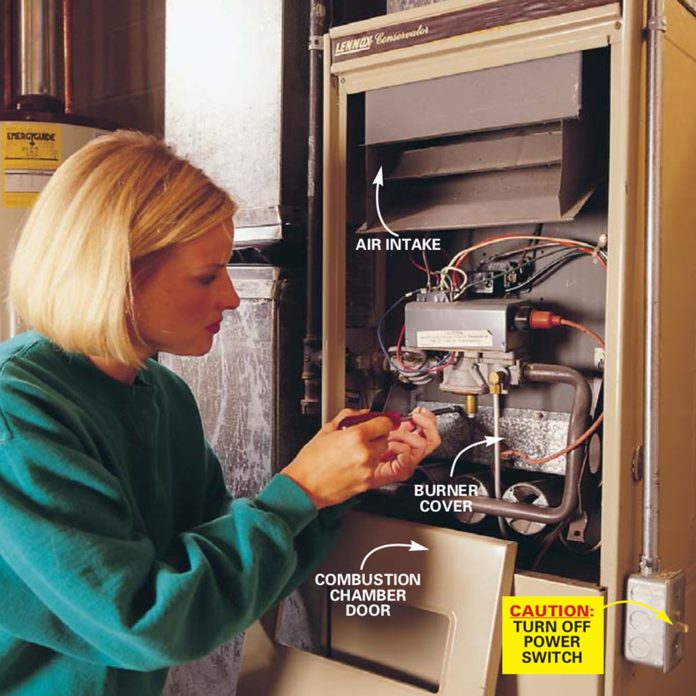
DIY maintenance will save you from needing a new furnace. To fix your furnace, first flip the electrical power switch to "Off." Remove the combustion chamber door by lifting up and pulling it out, and remove the burner cover (if you have one). It's usually held in place by two screws.
Step 2
Inspect the Burner Flames
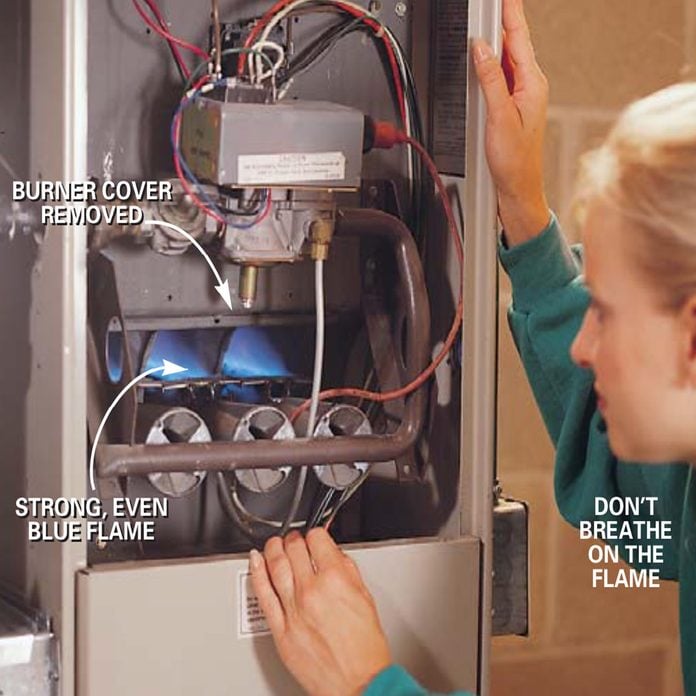
Turn the power switch on and activate the burners by turning up your thermostat. Inspect the burner flames. The flames should be fairly even and blue.
Yellow flames indicate dirty burners. (Don't breathe on the flames because the extra oxygen will also make them turn yellow.) Don't adjust the burners yourself. Call in a pro.
Sign Up For Our Newsletter
Complete DIY projects like a pro! Sign up for our newsletter!
Do It Right, Do It Yourself!
![]()
Step 3
Vacuum Out the Burner and Blower Cavities
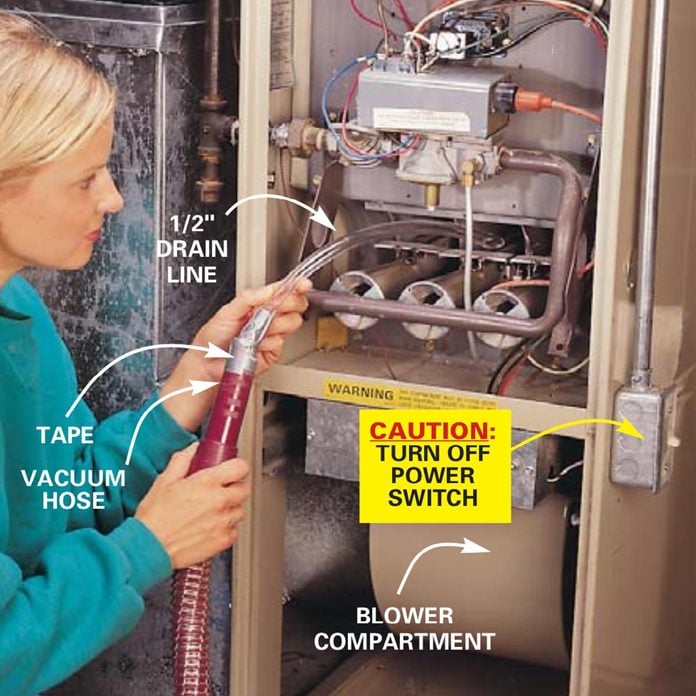
Turn off the power switch again and shut off the gas by giving the valve one-quarter turn. Vacuum the furnace burners and the furnace base. To get at the back of the burners, tape a 20-in. length of 1/2-in. drain line to your vacuum hose.
Vacuum everywhere you see dust. While everything is open, use a flashlight to look for signs of soot (fine black powder), which often indicates poor combustion. Lift off the lower door (blower door) and vacuum the blower compartment.
Step 4
Remove the Blower to Clean It
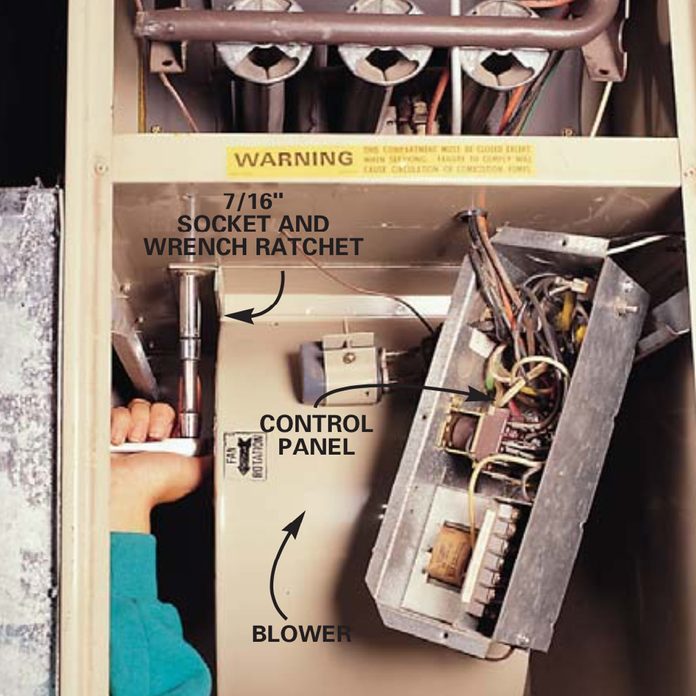
Remove the blower (also called a squirrel cage) in order to clean it. If you have a control panel in front of the blower, two screws will loosen it and you can let it hang. Next, using a 7/16-in. socket and ratchet, remove the two bolts that hold the blower in place, then gently lift it out.
Step 5
Vacuum and Brush the Blower Blades
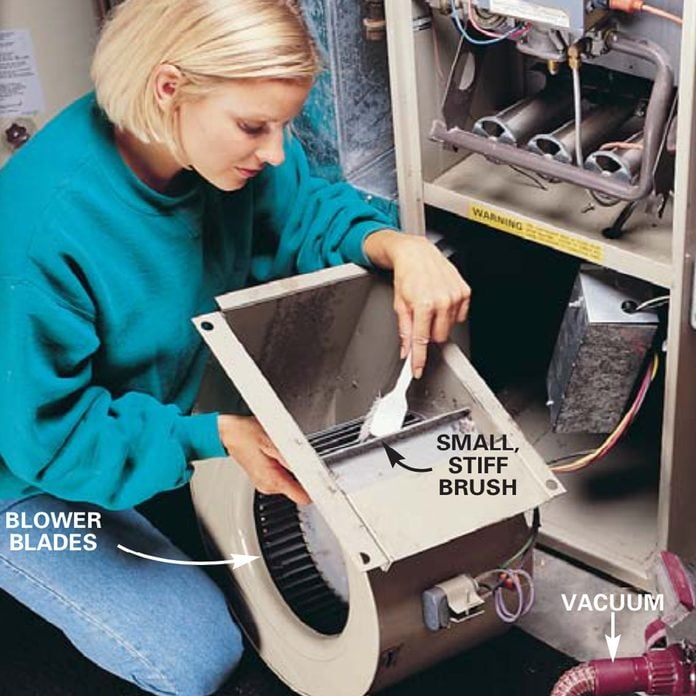
Clean the blower blades thoroughly with a vacuum and small brush. Take care not to stress the wiring or disturb the counterweights that will be on the fan blades. If you can't clean the blower thoroughly, don't clean it at all; you could throw it off balance.
Plus, here's how to buy furnace filters at the Home Depot.
Step 6
Change the Furnace Filter
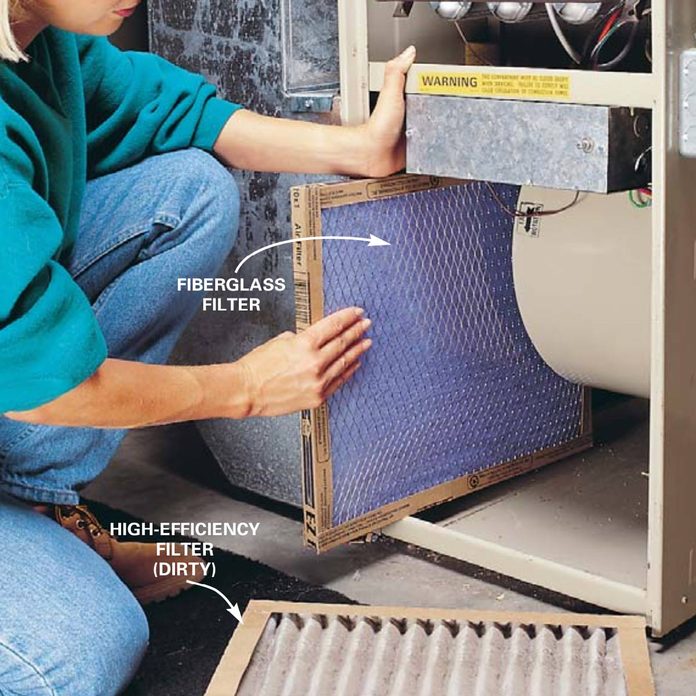
Change the furnace filter every one to three months. A $1 fiberglass filter will adequately protect the blower and blower motor. If you want to install a more expensive, high-efficiency filter, check the owner's manual for the manufacturer recommendations.
High-efficiency filters can restrict the airflow, strain the blower motor and make your furnace less efficient. If you want cleaner air, the best option is a separate air-cleaning system.
Step 7
Blow Dust Off the Pilot
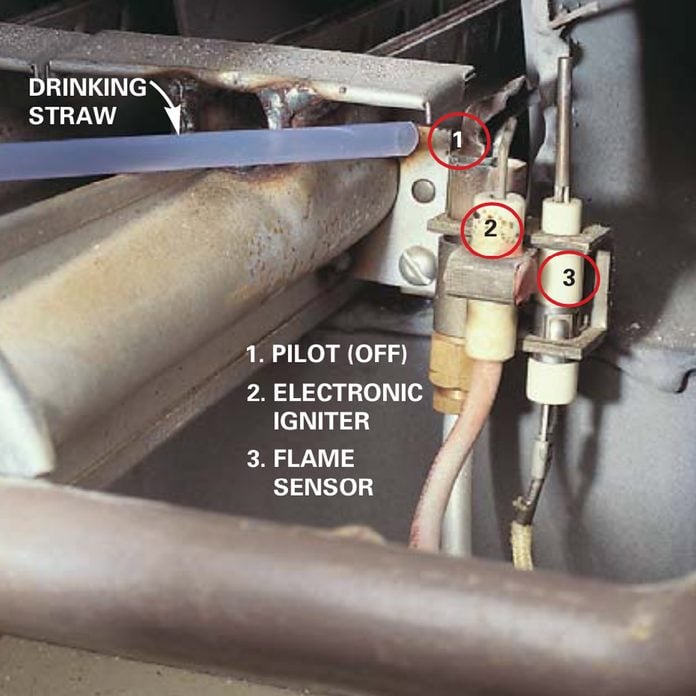
Blow dust off the pilot. Direct air to the exact spot by blowing through a drinking straw. A dirty pilot can cause the flame sensor (or thermocouple) to get a false reading that the pilot isn't lit. Some newer furnaces have hot surface igniters instead of pilots and electronic igniters.
Step 8
Clean the Flame Sensor

The flame sensor occasionally becomes coated with residue and will prevent your furnace from lighting. Remove it by pulling it down out of its bracket. Lightly clean the surface with fine emery cloth and slip the sensor back into its bracket.
Is your furnace humidifier not working? Here's how to replace it.
Step 9
Dust the Hot Surface Igniter Without Touching It
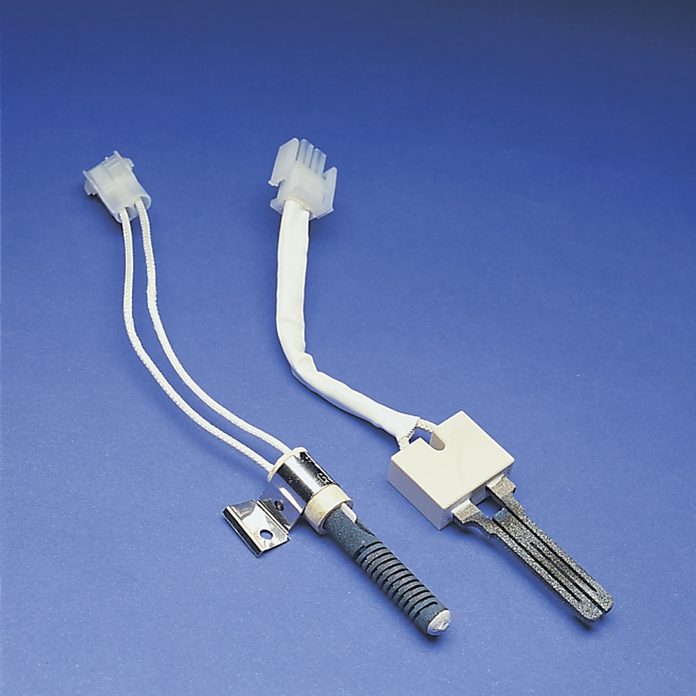
Hot surface igniters are the most common ignition system on furnaces being manufactured today. They take the place of standing pilot lights and electronic igniters. Clean the dust off the hot surface igniter by leaving the igniter in place and blowing air through a straw.
This part breaks very easily; don't even touch it. In fact, when you replace the furnace doors, do so gently to avoid breaking the igniter.
Step 10
Inspect the Drive Belt
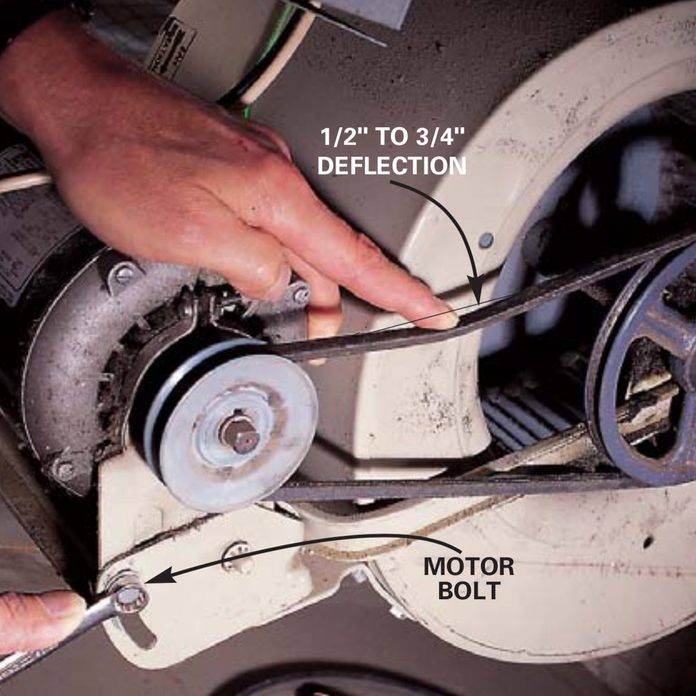
To repair your heating, the belts on belt-driven blowers need occasional adjustment or replacement. Inspect the drive belt for cracks or frayed areas. When you install the new belt, tension it so it deflects 1/2 to 3/4 in.
Step 11
Lubricate Bearings if Necessary
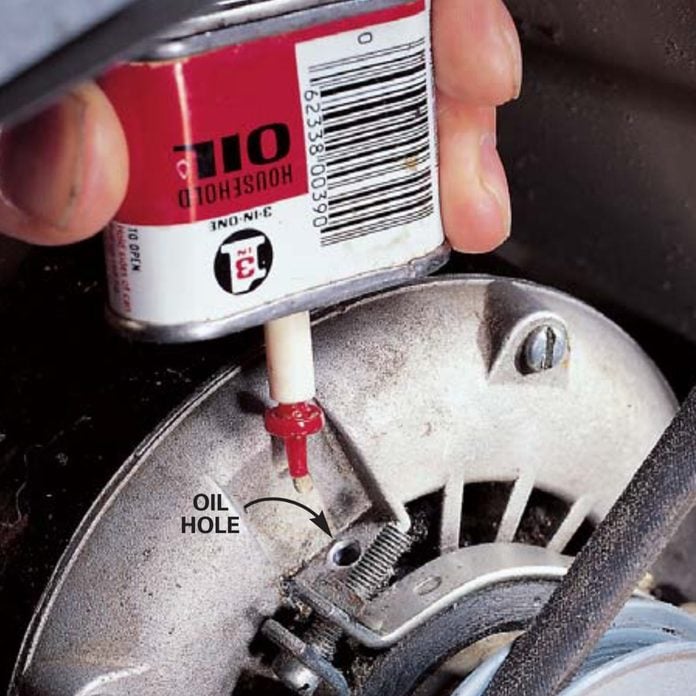
Some older furnaces have two motor bearings and two blower shaft bearings that require annual oiling. Clean around the oil caps and remove the caps. Apply two to three drops of lightweight machine oil and replace the caps. Don't over-lubricate!
Step 12
Adjust Dampers If Necessary

If your furnace heating ducts also serve as air conditioning ducts, they may have dampers that require adjusting for seasonal changes. The seasonal settings should be marked. Two-story homes often have separate supply trunks to serve the upstairs and downstairs.
To send more warm air downstairs (winter setting) or more cold air upstairs (summer setting), adjust the damper handle on each supply trunk.
Step 13
Seal Leaky Air Ducts
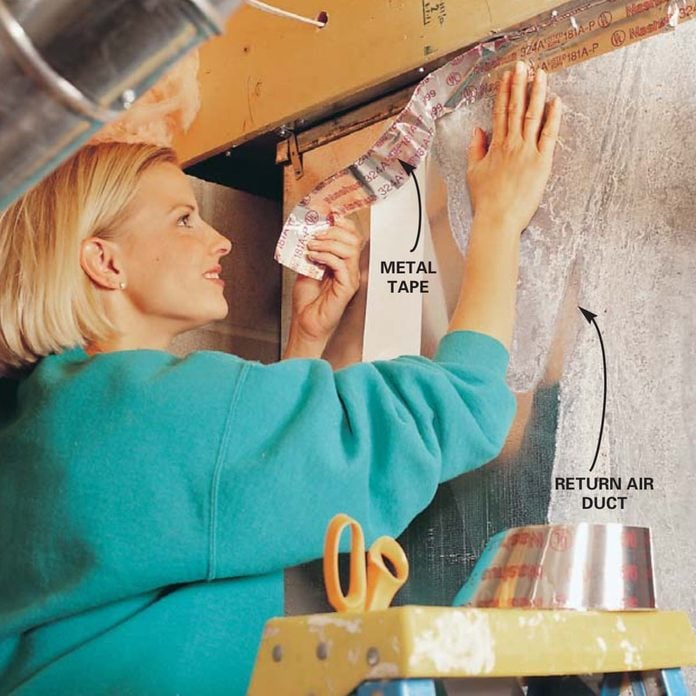
Seal leaky ducts, especially return air ducts, with special metal tape or high temperature silicone. Then conduct a backdrafting test to make sure the combustion gases go up the flue: Adjust the thermostat so the burners come on. Hold a smoking stick of incense beside the draft hood. The smoke should be drawn into the hood.
Also inspect the exhaust vent pipes on your furnace and water heater (while they're cool). White powdery residue can indicate corrosion. Call in a pro to fix these problems.
how to clean a furnace
Source: https://www.familyhandyman.com/project/do-it-yourself-furnace-maintenance-will-save-a-repair-bill/
Posted by: selfancel1979.blogspot.com

0 Response to "how to clean a furnace"
Post a Comment